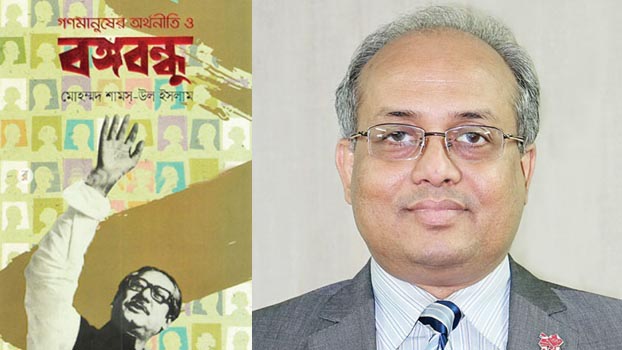Book Review
Bangabandhu’s economic philosophy

Gonomanusher orthoniti o Bangabandhu (Mass people's economy and Bangabandhu) by Mohammad Shams-Ul Islam, a widely hyped book in this year’s book fair, sheds light on Bangabandhu’s philosophy on the economy and inclusive development.
This is not a complex tome to deal with the intricate problems of modern economy. On the contrary, the book published by Aloghar Prakashana makes it much easier for us to comprehend how Bangabandhu Sheikh Mujibur Rahman, who was a beacon to all aspects of life of the Bengalees , contemplated the economic emancipation of the masses and how he put those ideas into practice.
He observed with keen eye the process of exploitation from very close quarters. His sacrifices and relentless work for the betterment of the lot of the deprived have been portrayed in the book.
Bangabandhu was more interested in an agriculture-oriented economy than any other Bengali leader. He was firmly determined to build a sustainable economy centring on agriculture. No one thought about the farmers of the country as he use to do after the collapse of the agricultural economy during the British rule.
Bangabandhu’s views on the economy of the masses were far advanced. Reflecting on his sharp insight and clear perception, Mohammad Shams-Ul Islam mentions in his book that Bangabandhu had positive ideas about what kind of programs should be launched to move the country to a forward direction and how to build the economic structure of Bangladesh on a strong foundation. He did not need to read any books on economics to get this idea; he read the pangs in the minds of the people of Bengal due to thousands of years of subjugation and deprivation.
This book successfully eliminates the misconceptions regarding Bangabandhu’s economic strategy, which was created by distorting history due to the misguided attempts of the reactionaries.
Bangabandhu included a section in the Constitution on rural agriculture-based economy within ten months of the country’s independence. He worked persistently to restore the once prosperous agriculture-based economy of the then East Pakistan and he was able to build a mass movement despite the obstinate obstacles of the Pakistani rulers. He took various steps with utmost importance in the agriculture sector of the war-torn country.
The author presents his readers with a lens that analyses Bangabandhu’s ability to take the right decision in every step of his life. He always prioritised the socio-economic emancipation of the masses while making every decision.
Ideologically, Bangabandhu was against any kind of discrimination. In the fifty-five years of his life, he always longed for a non-discriminatory way of life. The manifestation of his desire was to build a ‘Shonar Bangla’ (Golden Bengal), free from exploitation.
In the five chapters of the book, the author has presented his own analysis by highlighting Bangabandhu's political-economic thoughts and actions. Bangabandhu chose the path of liberation through political struggle as he realized at an early age the existence of economic inequality that the people of this country had gone through for centuries.
The first chapter of the book presents a brief description of the economic plight of the masses during the rule of the dictators. The second chapter deals with the politics at grassroots level and the way in which the daily struggles of the Bengalis shaped Bangabandhu's philosophy of non-discriminatory economy.
The third chapter discusses and analyzes Bangabandhu's thoughts on agriculture and his contribution to the development of agriculture in Bangladesh while the fourth one provides a glimpse into his nationalization programme. The fifth and the last chapter talk about the challenges faced by Bangabandhu after taking over the leadership of the newly independent country.





